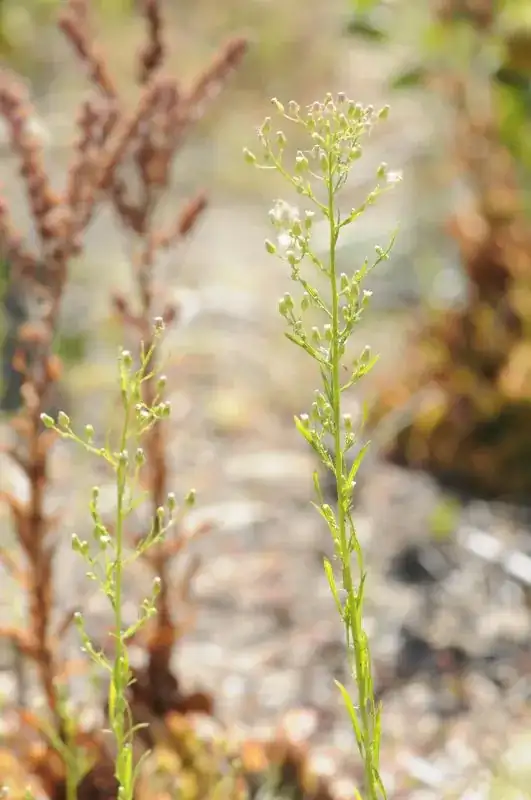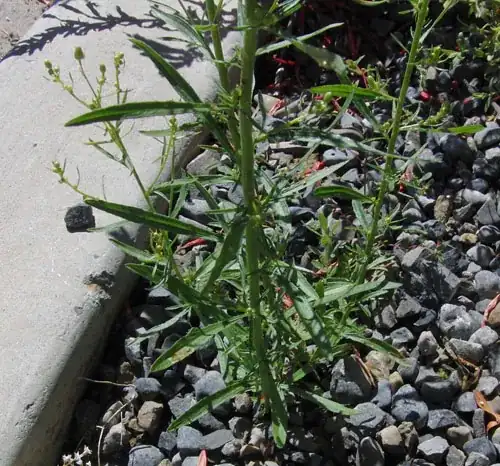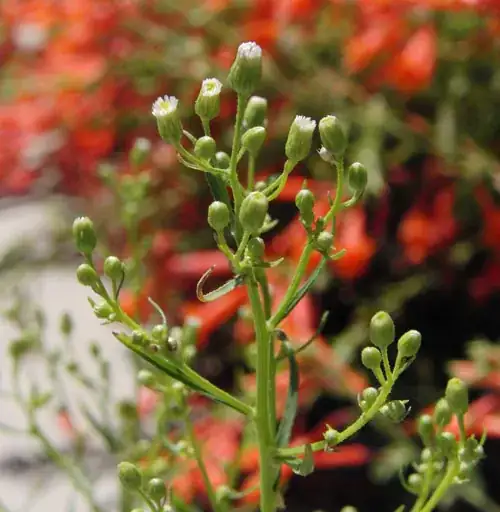I'm located in northern Utah, USA.
There is a weed which is proving difficult to control, which I haven't been able to identify.

It is usually fairly easy to pull, but you only get a small bit of root because these things spread via an underground runner. Usually there will be dozens all along one run, yet removing them all is almost impossible because of surrounding plants that I want to keep.
The one pictured is in the seeding stage, I usually try not to let them get this far.
What is it, and is there some type of control that is especially effective on it?
Edit:
I am adding two additional photos as well as links to larger resolution versions.

